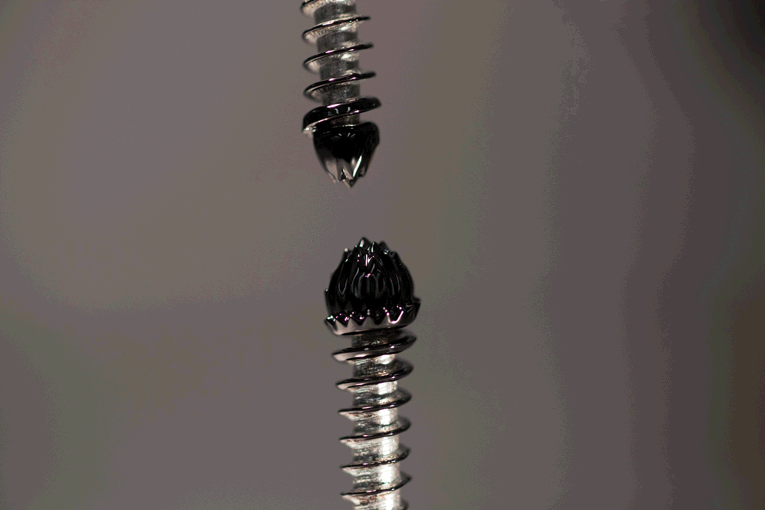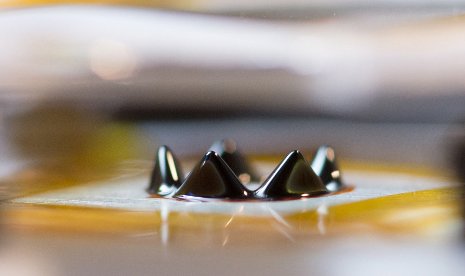By Jean-Jacques DeLisle, contributing writer
Once a microsatellite and nanosatellite have been launched into space after piggybacking on millions of dollars of liquid fuel and multistage rockets, they are on their own to provide the energy and propulsion required to complete their mission. However, many of the maneuvering technologies, such as ion thrusters and plasma thrusters, which are viable for larger satellites, suffer when scaled down to smaller proportions. Electrospray thrusters that use electric stimulus to induce jets of fluid are being investigated as a possible solution, but at the cost of expensive micromachining fabrication and very fragile thrusters. In steps to overcome these limitations, researchers from the Michigan Technological University are developing new self-healing ionic ferrofluid electrospray thrusters by making advances in modeling ionic ferrofluid behavior.
Back in 2012 with funding from the Air Force Office of Scientific Research (AFOSR), L. Brad King, a professor at Michigan Tech, discovered that when an ionic ferrofluid is subjected to both a magnetic and electric field, the spikes that form from the magnetic stimulus can be manipulated to eject fluid similar to how traditional electrospray nozzles operate. Unfortunately, the physics of ferrofluids is poorly understood, and developing an efficient and consistent ionic ferrofluid thruster was many years off.

Ionic ferrofluids are made of a solvent and magnetic material and respond to stimulus from external magnetic fields. Image source: MTU.
“We’re working with a unique material called an ionic liquid ferrofluid,” said King. “When we put a magnet underneath a small pool of the ferrofluid, it turns into a beautiful hedgehog structure of aligned peaks. When we apply a strong electric field to that array of peaks, each one emits an individual micro-jet of ions.”
Further work by doctoral candidate Brandon Jackson has led to the development of an initial model that helps predict the behavior of the ferrofluid. Specifically, Jackson’s work involved experimental and computational study of the interfacial dynamics of a ferrofluid, which led to the creation of a computational model.
“We wanted to learn what led up to emission instability in one single peak of the ferrofluid microthruster,” said Jackson. “We learned that the magnetic field has a large effect on preconditioning the fluid electric stress.”
Researchers at Michigan Technological University have discovered that when an ionic ferrofluid is exposed to both a magnetic and electric field simultaneously, the fluid forms spikes, which behave as electrospray thrusters.

Researchers at Michigan Technological University have discovered that when an ionic ferrofluid is exposed to both a magnetic and electric field simultaneously, the fluid forms spikes, which behave as electrospray thrusters. Image source: MTU.
There is still much work to be done, as Jackson’s early model only accounts for the behavior of a single peak. When a ferrofluid is stimulated by a magnetic field, many peaks form, and it is not understood yet why only a limited number of peaks demonstrate electrospray behavior. This technology is promising, especially to the AFOSR, which awarded the Ion Space Propulsion Laboratory another grant to continue the research. Moreover, it appears that the ferrofluid material may also be extremely resilient to damage, as there is early evidence that the ferrofluid peaks self-heal after damage from overvoltage and possibly physical stress as well.
“If we are successful, our thruster will enable small inexpensive satellites with their own propulsion to be mass-produced,” said King. “That could improve remote sensing for better climate modeling or provide better internet connectivity, which 3 billion people in the world still do not have.” Future research will strive to understand and model more complex and multiple peak ionic ferrofluid electrospray behavior and move on to developing early thrusters.
Advertisement
Learn more about Electronic Products Magazine





